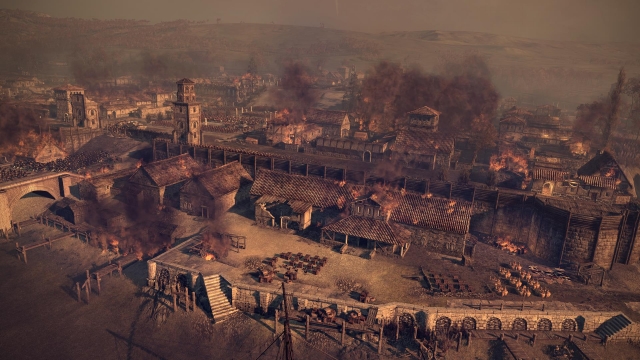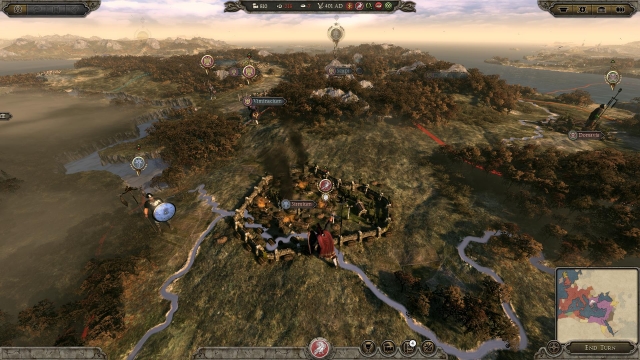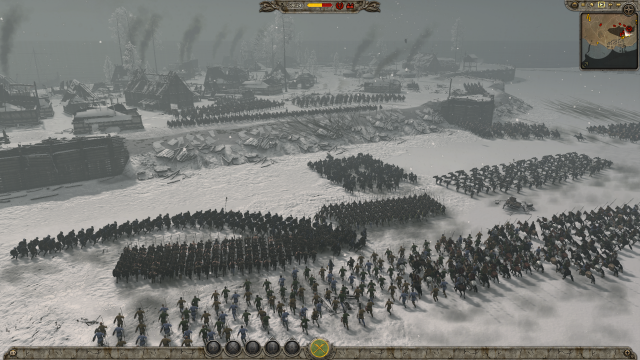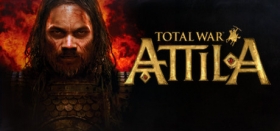
Total War: Atilla Review
Creative Assembly is one of those studio names that has a history. For many years it was famed for its ability to create visually astounding and tactically deep strategy games that combined the best of 4X tactics with the action of classic base-builders. When that studio released Rome: Total War in late 2004 the game was widely regarded as one of the best PC games ever made. The studio continued this golden streak until they began to stutter, releasing bug-riddled Empire in 2007 before recovering form with Shogun II in 2011.
It seems that this was the main impetus behind the design and quick release of Total War: Attila: an attempt to recover form and reputation lost with the disastrous release of Total War: Rome II. This predecessor to Attila took the dreams of an entire fandom and dashed it against the proverbial rocks. The loss of face Creative Assembly suffered in the eyes of its fans, for a myriad of reasons, was gigantic. Total War: Attila, upon first impression, looks to be the perfect apology.
Attila takes on the same shape as Fall of the Samurai did for Shogun II: too big to be a DLC pack, too small to be a full release. Creative Assembly has really taken the opportunity to tinker and play with the formula from Rome II, perhaps (whisper it) because it was given ample time to do so by publishers Sega.
The game is centred around the 4th century AD, a time when the Roman Empire was split between Western and Eastern realms ruled by twin Emperors. The ancient world had changed dramatically since the time of the Republic and Creative Assembly has sought to mirror that in its new campaign map. The lush green forests and deep blue oceans of Rome II have been replaced by a more nuanced colour palette.

Attila aims to replicate the dread that surrounded Europe as various barbarian hordes (most of them playable – more on that later) cut a swathe through ‘civilised’ Roman territory. Indeed, when playing as the beleaguered Western Roman Empire, beset on all sides by rebellion, enemies and financial crisis, the tension can at times be palpable.
Total War: Attila has taken steps to enhance and streamline the campaign features introduced in Rome II. Generals and armies now have information panels that contain detailed info on their makeup and personalities and, as they fight and gain levels and ranks, their traits and abilities. A shorter campaign, conducted over seasons rather than years, means that your generals won’t die of old age before you’ve even used them, allowing you to form real stories with your leaders and kings.
Perhaps the most celebrated feature in Total War: Attila is a returning one. Family trees make a return in this pseudo-expansion, meaning you can once again take the role of a prominent barbarian chief or Roman patrician. As such the traits system has also been overhauled – generals now also have three ancillary slots – for armour, weapons and advisor. Each grants various buffs and debuffs and can combine to create a dizzying array of combinations. The skill tree has also transformed back into a proper tree, meaning it’s easier to see the progress your general is making.

Another major feature added to the game is that of hordes and desolation. Hordes are basically large stacks of armies that have no real settlement to call home – they can wander through territory and be treated with or warred upon. Playing as a horde can give a player a lot of freedom, allowing them to move through the map to find a province they like the look of. Playable hordes at the start of the game include the Ostrogoths, Visigoths, Vandals and, of course, the Huns.
Desolation introduces what is probably one of the most revolutionary features in a Total War campaign to date: the ability to destroy cities. In previous games, as fully-loaded armies of enemies attacked your undefended settlements you had to grin and bear it. In Attila, however, you have the option to abandon your city entirely, laying waste to it and the surrounding province, leaving nothing but scorched earth for the invaders. An abandoned province is covered with ash and fires on the campaign map and adds to the grim (and thrilling) presentation of the era. It is entirely possible to repopulate these areas, but settlers face reduced soil fertility and public order for their troubles. Abandoning a settlement isn’t a decision to take lightly, though, as it will be seen as cowardly across your lands and give you your own hefty public order penalty to boot.
Campaign AI, much maligned in Rome II, has been tweaked and seems altogether more challenging. In my time playing as the (Legendary difficulty) Western Roman Empire I was constantly having to adapt to the AI’s moves as they attempted to strike wherever I was weakest. The campaign battle system has also been tweaked – no longer can armies storm cities without siege equipment and no longer are players given percentile-accurate projections for how likely they are to win an auto-resolve battle. It encourages the player to engage in the other essential part of a Total War game: the battlefield.
Even when riddled with bugs and glitches, the battlefield of Rome II was remarkable. Creative Assembly has taken that experience and given it a complete overhaul in Total War: Attila, creating a fluid and visually stunning experience. Character models are detailed and full of emotion while unit animations are smooth and realistic. When two battle lines crash it feels far more realistic, with none of the disastrous mosh-pits that occurred in the previous game. The atmosphere has been improved, too, creating dynamic battlegrounds: trees will light up when hit by flaming arrows, buildings catch fire, setting those next to them aflame, and the battlefield itself fills with black smoke. Besieged a city almost to surrender? The streets will be deserted, dilapidated and dirty – reflecting their months without supply.

The battle UI has also been slimmed down – no longer are large tooltips the staple of in-battle information – small, recognisable icons have replaced the text descriptors to enable the battlefield commander to see what is going on in a glance. Is a unit about to engage one far more powerful? A red caution sign will appear within their indicator. Are they fighting well and beating their opponents? Green crossed swords will blink above their unit card. The square icon-like indicators that hover above formations are simple to read and feature easy symbols – meaning you can see the line-up of an enemy army without having to painstakingly zoom in on each formation.
Battle AI – at least on the harder difficulties – is much improved. No longer do cavalry charge blindly onto spears and pikes (a godsend considering the titular enemies in the game). Instead, they skirt around your forces looking to target weaker skirmishers or flank heavy infantry. Units rout in the face of elite infantry or hold on to grim death if their general rallies them at the right time. All in all it provides a much more visceral tactical experience than its predecessor and one that fans of the series have been calling out for.
Total War: Attila sees Creative Assembly return to remarkable form. The new depth of the campaign mode, visual effects and mechanics has created a (dare I say it) credible rival to seminal dynastic strategy series Crusader Kings. Battles have been improved tenfold, creating an experience many Total War fans will relish with glee – not since the days of Medieval II have I as thoroughly enjoyed the battles. There is little in the way of bugs or glitches to speak for – at least up to the time of writing I had found few. At this moment the only complaint that could be levelled is the small selection of factions – but with one DLC pack already announced one can imagine there will be more on the way.
Such a success begs the question, though: why was this not the case with Total War: Rome II? The developers had three years for that title yet in Attila managed to produce a product twice as good in a third of the time. Regardless, Total War: Attila is a triumphant return for the kings of PC battlefield strategy, and hopefully will usher in a new era of incredible Total War titles.
8.5/10
Total War: ATTILA (Reviewed on Windows)
This game is great, with minimal or no negatives.
Total War: Attila is a triumphant return for the kings of PC battlefield strategy, and hopefully will usher in a new era of incredible Total War titles.












COMMENTS